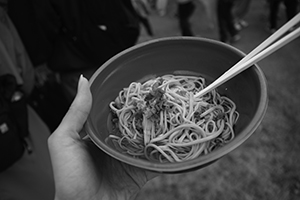 Although Christmas and its Western trappings have become more and more popular in Japan, New Year’s or Oshogatsu as it known locally is the Grand Daddy of all Japanese holidays. Leading up to the end of the year, many people will take part at bonenkai or “parties to forget the year” with friends, former classmates and co-workers.
Although Christmas and its Western trappings have become more and more popular in Japan, New Year’s or Oshogatsu as it known locally is the Grand Daddy of all Japanese holidays. Leading up to the end of the year, many people will take part at bonenkai or “parties to forget the year” with friends, former classmates and co-workers.
While nowadays, many people celebrate with more Western-style New Year’s parties, most Japanese will take part in the more traditional Japanese festivities. Heading into the New Year’s time there are days of rituals and celebrations with some of the tastiest foods to be had over the final days and first few days of the year.
Oshogatsu is quite similar to Canadian and American Thanksgiving in that family members tend to gather together to enjoy a few days of togetherness and, quite frankly, eating too much. December 31st is usually spent with everyone pitching in to give the house a thorough cleaning so that the coming year can be started with a clean slate, before settling in for a few slow days of rest and relaxation.
The first thing most people think of when they think about Oshogatsu foods is also most often the last thing to eat in the ending year; Toshikoshi Soba. Toshikoshi Soba basically translates to “end of the year/beginning of the year” soba; a dish of late night buckwheat noodles eaten while waiting for the New Year.
Soba noodles are quite long and are thought to symbolize longevity, good luck and good fortune. It is also thought that because soba is so easy to bite through, eating it represents cutting or severing any carryover of bad times or hardship that may have occurred in the past year. Soba is eaten by virtually everybody, even those people who do not normally eat soba.
 For those unfamiliar with soba, it is a type of thin noodle, not unlike spaghetti made from buckwheat flour. Soba is a food that bridges all levels of the social strata: it is served in cheap fast-food-type restaurants and on many train platforms. It also is sold in high-end, exclusive and extremely expensive restaurants.
For those unfamiliar with soba, it is a type of thin noodle, not unlike spaghetti made from buckwheat flour. Soba is a food that bridges all levels of the social strata: it is served in cheap fast-food-type restaurants and on many train platforms. It also is sold in high-end, exclusive and extremely expensive restaurants.
The noodles and broth can also be bought at the supermarket and prepared simply and easily at home, making soba an extremely popular food in Japan, especially in Tokyo. The eating of soba in Tokyo dates back to the Edo period. During this time well-to-do Edoites (modern Tokyoites) mainly ate the more expensive white rice while the poorer rural Japanese ate rice with the husks, bran and germ intact.
Removing the husk and polishing the rice resulted in an attractive product with some cachet, but also removed important nutrients, particularly thiamine. An extremely low-thiamine diet can result in the disease beri beri and to counter this, Edoites consumed thiamine-rich soba.
Almost every neighborhood in the capital had one or two soba shops serving the local populace. Even today it is not uncommon to find a local restaurant that serves virtually nothing but different varieties of soba.
Like almost every dish in Japan, soba is eaten with chopsticks and slurping the noodles noisily considered polite. This is especially common when eating hot noodles as slurping the noodles quickly into the mouth helps to cool the noodles.
Like several other Japanese dishes, it is common to keep with the seasons, eating cooked, cooled noodles in the summer and hot noodles in the winter.
Chilled soba is most often served on a bamboo screen and will often be garnished with a bit of nori, or dried seaweed. The noodles will be served with soba tsuyu, a sauce made from dashi, sweet soy sauce and mirin. The tsuyu will sometimes be served with wasabi, grated ginger or scallions for additional flavor. To eat the soba, one takes a small amount of noodles with their chopsticks, dipping it briefly into the tsuyu before eating. Hand-made soba noodles are almost always eaten cold as this is considered to be the best way to appreciate the unique texture of the noodles which are adversely affected by letting them soak in hot broth. It is popular to drink the water the noodles were cooked in mixed with leftover tsuyu after finishing the noodles.
Hot soba is very popular in wintertime and is how most people will enjoy their toshikoshi soba on New Year’s Eve. This soba is cooked in a thinned tsuyu broth and is usually garnished with sliced scallions and shichimi togarashi (mixed chili powder.) Many toppings are used on hot soba such as fried tofu (kitsune soba), bits of tempura batter (tanuki soba), shrimp tempura (tempura soba), a raw egg (tsukimi soba) or seaweed (wakame soba.)
The most famous soba comes from Nagano prefecture and is known as Shinano or Shinsu soba. Nagano noodles made from 100 percent buckwheat, as opposed to those made with a mix of buckwheat and regular flours, is considered to be the best and this reflected in the price.
Soba can be enjoyed at home as the preparation of it is ridiculously simple. After purchasing soba noodles from the grocery store, simply boil for a minute or so, drain and eat with store-bought tsuyu, running the soba under cold water first, if you wish to enjoy cold soba as opposed to hot.
It is worth noting that soba is the name for buckwheat by itself and completely different food items will use the name as in the case of sobacha, or buckwheat tea. Occasionally, the term soba is used to refer to noodles in general; yakisoba is an very common example of this festival and barbeque staple as the noodles that are stir fried with vegetables and sauce are actually ramen noodles.
Following the New Year’s Eve soba feast, it is only reasonable for homemakers to take a break and shut the kitchen down for a few days; enter Osechi Ryori. The term osechi comes from one of the five seasonal festivals in the Imperail Court in Kyoto.
During this time it was considered taboo to cook during the first three days of the New Year and osechi was prepared before the end of the year and eaten over the first three days.
Osechi ryori originally consisted mainly of boiled vegetables seasoned with soy sauce, mirin or sugar that could be eaten for a few days without further preparation. From these humble beginnings, the variety of foods in osechi ryori have increased to include many different items, with some having special meanings attached to them.
Osechi ryori is served in lacquered, stacked bento-like boxes known as ju bako and the foods can be safely kept in a refrigerator or at a cool room temperature. Some typical special items included in the boxes include: datemaki, a sweetened, rolled omelet that symbolizes happy days; kamaboko, broiled fish paste that is usually alternated in pink and white slices and carries a celebratory meaning. Other items may include kazunoko, herring roe which represents a desire to be blessed with children in the New Year; kuro mame, black beans which signify a desire for health and konbu, a type of seaweed that is associated with the word yorokobu which means “happiness.”
 One other item that requires some light cooking is ozoni, a clear soup containing mochi, or rice cakes. Combining mochi, vegetables and dried food items ozoni was originally a dish reserved for samurai and eaten during field battles. Over the years ozoni was shared with the common people and has since become a staple of osechi ryori. Today, it is common to add chicken, fish or meatballs to the soup and it is often seasoned at the table with shichimi, or chili flakes.
One other item that requires some light cooking is ozoni, a clear soup containing mochi, or rice cakes. Combining mochi, vegetables and dried food items ozoni was originally a dish reserved for samurai and eaten during field battles. Over the years ozoni was shared with the common people and has since become a staple of osechi ryori. Today, it is common to add chicken, fish or meatballs to the soup and it is often seasoned at the table with shichimi, or chili flakes.
The Japanese may not celebrate New Year’s Eve with as much hoopla as Western countries with the big countdown and huge parties, but their celebrations do last for days. The entire time leading up to the end of the year and the Oshogatsu holidays are a major time of celebration in Japan and this time of year is an excellent opportunity to try some foods that are not available at other times during the year. Be sure to check out page 6 for some ideas of things to do over Oshogatsu.
Story by James Souilliere
From J SELECT Magazine, January 2009

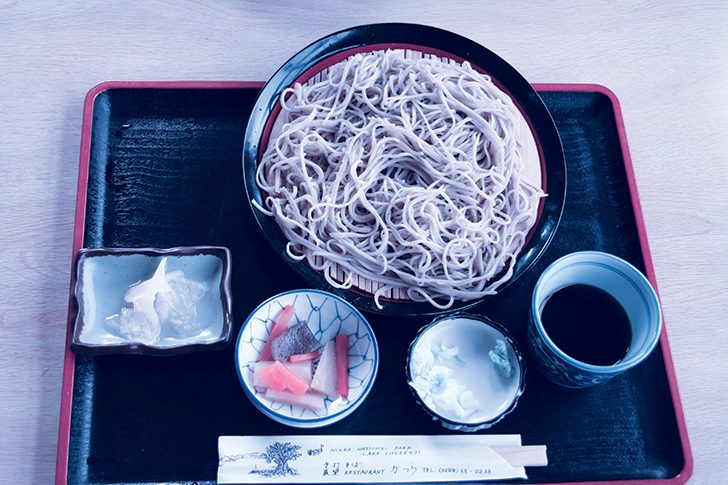

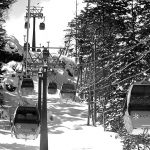
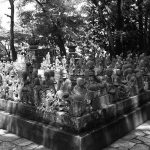
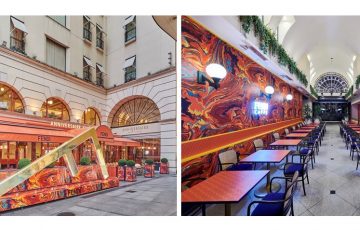
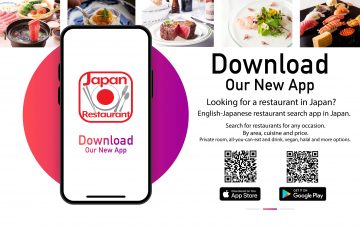
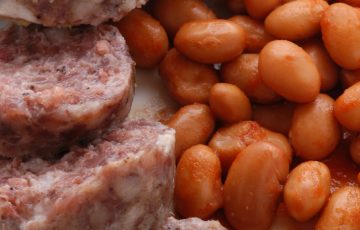
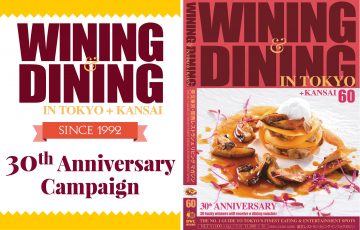
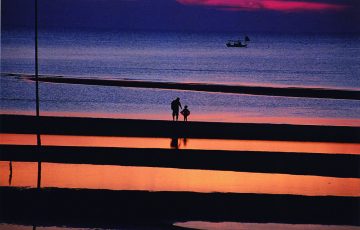
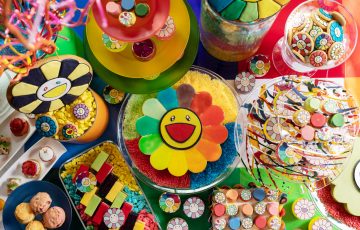




Recent Comments